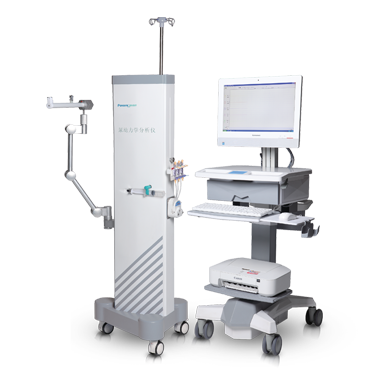
Senior care levels are a key consideration for families when considering options for their loved one's senior living needs. Understanding how different levels of care impact someone's life can help you find the right fit.
It can be difficult to decide on the best elderly care option for a loved one, especially since there are so many options in today's marketplace. Consider these tips as you explore the available options:
The Cost of Senior Care Levels
While there is no hard and fast rule, costs typically increase by several hundred dollars per month at each new level of care for assisted living facilities. This is mostly due to the fact that each new level of care for seniors provides more assistance.
The level of care that a resident requires depends on their personal and health care needs. Professional staff performs a needs analysis to determine this. This noninvasive test will assess the level of support that your loved-one needs.

In general, the lower levels of care cater to seniors who require minimal assistance in their daily activities (ADLs) or health-related requirements. The level 3 assisted living care includes help with dressing, toileting and bathing. However, it does not include the medical monitoring required for the higher levels of care.
Eating, shaving and taking medicine are among the services that seniors most often need. Many seniors can feed them selves, but others require assistance in cutting up food or run a greater risk of choking.
Another area in which the level of attention required can be very different is grooming. Some seniors can brush their teeth, but others need help with getting their hair done or shaving.
Medication Needs
Some people can open their pill bottles and administer injections on their own, while others require assistance. If you have diabetes or high pressure, it may be necessary to remind people to take their medication regularly or monitor their health.
Bathing: It's important for elderly adults to shower and bathe regularly to maintain their hygiene. Shower-related fall risks are dangerous and a concern for seniors.

Memory Loss: Some seniors show signs of Alzheimer's disease or dementia and need extra assistance with their daily activities to remain healthy and active. These residents need caregivers to give them reminders, provide physical or verbal cueing and manage their daily life activities.
Skilled Home Nursing:
In skilled nursing communities, the highest level of care is provided to seniors. These facilities offer round-the clock nursing and rehabilitation for elderly residents.
Unlike assisted living and independent living facilities, these residential settings usually have a smaller number of residents. It allows for greater privacy, and seniors can maintain their independence.
FAQ
What are the three types?
The first system is a more traditional system that gives patients little choice about who they see for treatment. They might go to hospital A only if they require an operation. Otherwise, they may as well not bother since there isn't any other option.
The second system is a fee-for-service system where doctors earn money based on how many tests, operations, and drugs they perform. If you don’t pay them enough they won’t do additional work and you’ll be twice as expensive.
The third system pays doctors according to the amount they spend on care, not by how many procedures performed. This encourages doctors to use less expensive treatments such as talking therapies instead of surgery.
Who is responsible in public health?
All levels of government are responsible for public health. Local governments are responsible for roads, schools as well parks and recreation facilities. Both the state and national governments create laws and regulations for food safety, workplace safety and consumer protection.
What should I know about immunizations?
Immunization refers to the stimulation of an immune response to vaccines. The body reacts to the vaccine by producing antibodies (immunoglobulins), which protect against infection.
Statistics
- Foreign investment in hospitals—up to 70% ownership- has been encouraged as an incentive for privatization. (en.wikipedia.org)
- The health share of the Gross domestic product (GDP) is expected to continue its upward trend, reaching 19.9 percent of GDP by 2025. (en.wikipedia.org)
- Price Increases, Aging Push Sector To 20 Percent Of Economy". (en.wikipedia.org)
- For the most part, that's true—over 80 percent of patients are over the age of 65. (rasmussen.edu)
- The healthcare sector is one of the largest and most complex in the U.S. economy, accounting for 18% of gross domestic product (GDP) in 2020.1 (investopedia.com)
External Links
How To
What are the 4 Health Systems
Healthcare is a complex network that includes hospitals, clinics and pharmaceutical companies as well as insurance providers, government agencies, public officials and other organizations.
This infographic was created to help people understand the US healthcare system.
Here are some key points:
-
Healthcare spending is $2 trillion annually, representing 17% of the GDP. This is nearly twice the amount of the entire defense spending budget.
-
Medical inflation reached 6.6% for 2015, more than any other category.
-
Americans spend on average 9% of their income for health care.
-
There were more than 300 million Americans without insurance as of 2014.
-
The Affordable Care Act (ACA) has been signed into law, but it isn't been fully implemented yet. There are still large gaps in coverage.
-
A majority believe that the ACA must be improved.
-
The United States spends more on healthcare than any other country.
-
Affordable healthcare for all Americans would reduce the cost of healthcare by $2.8 trillion per year.
-
Medicare, Medicaid, or private insurance cover 56%.
-
The top three reasons people aren't getting insured include not being financially able ($25 billion), having too much time to look for insurance ($16.4 trillion), and not knowing what it is ($14.7 billion).
-
There are two types of plans: HMO (health maintenance organization) and PPO (preferred provider organization).
-
Private insurance covers all services, including doctor, dentist, prescriptions, physical therapy, and many others.
-
The public programs include hospitalization, outpatient surgery and nursing homes. They also cover long-term care and hospice care.
-
Medicare, a federal program, provides seniors with health insurance. It pays for hospital stays, skilled nursing facility stays, and home health visits.
-
Medicaid is a joint federal-state program that provides financial assistance for low-income individuals or families who earn too little to qualify for other benefits.